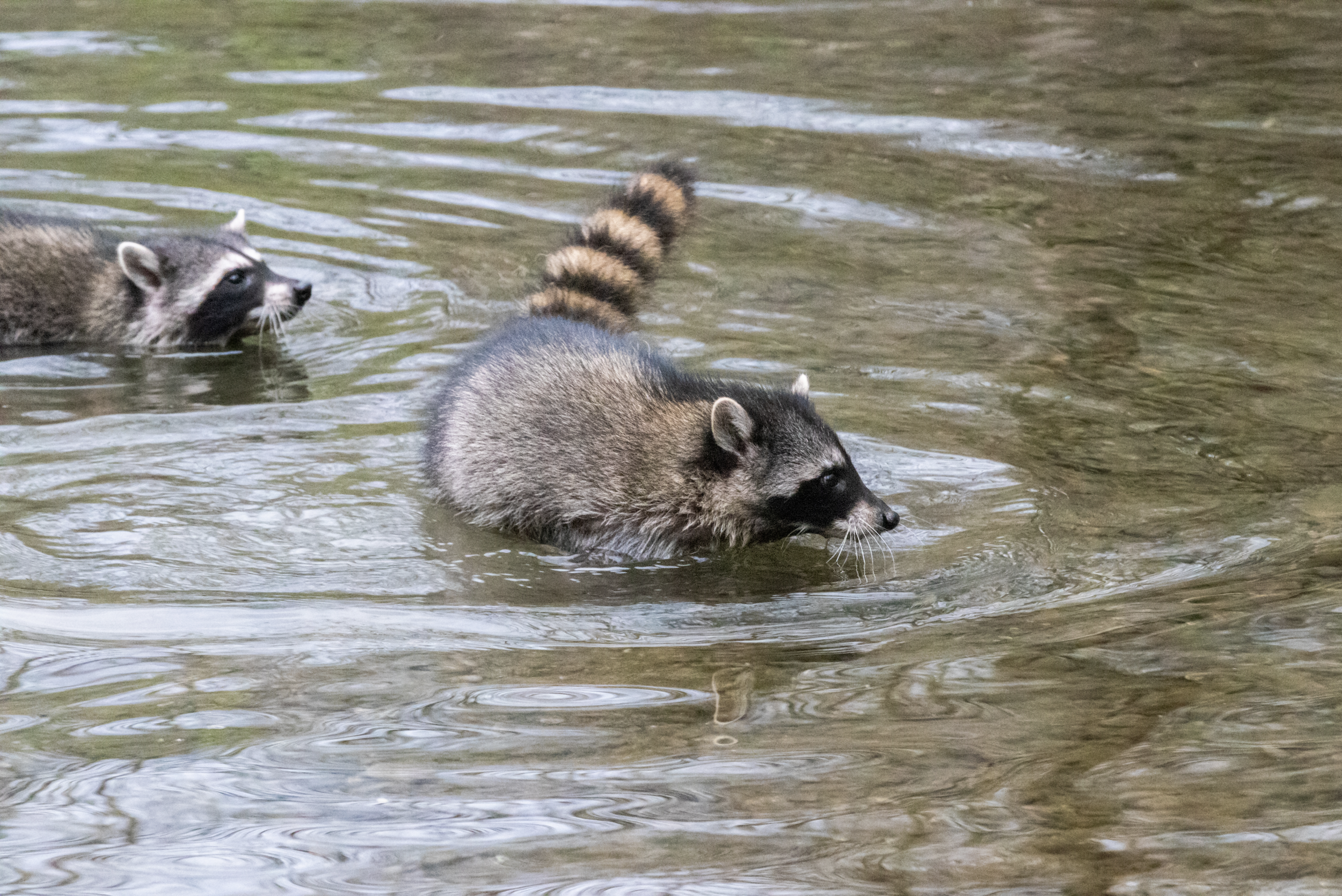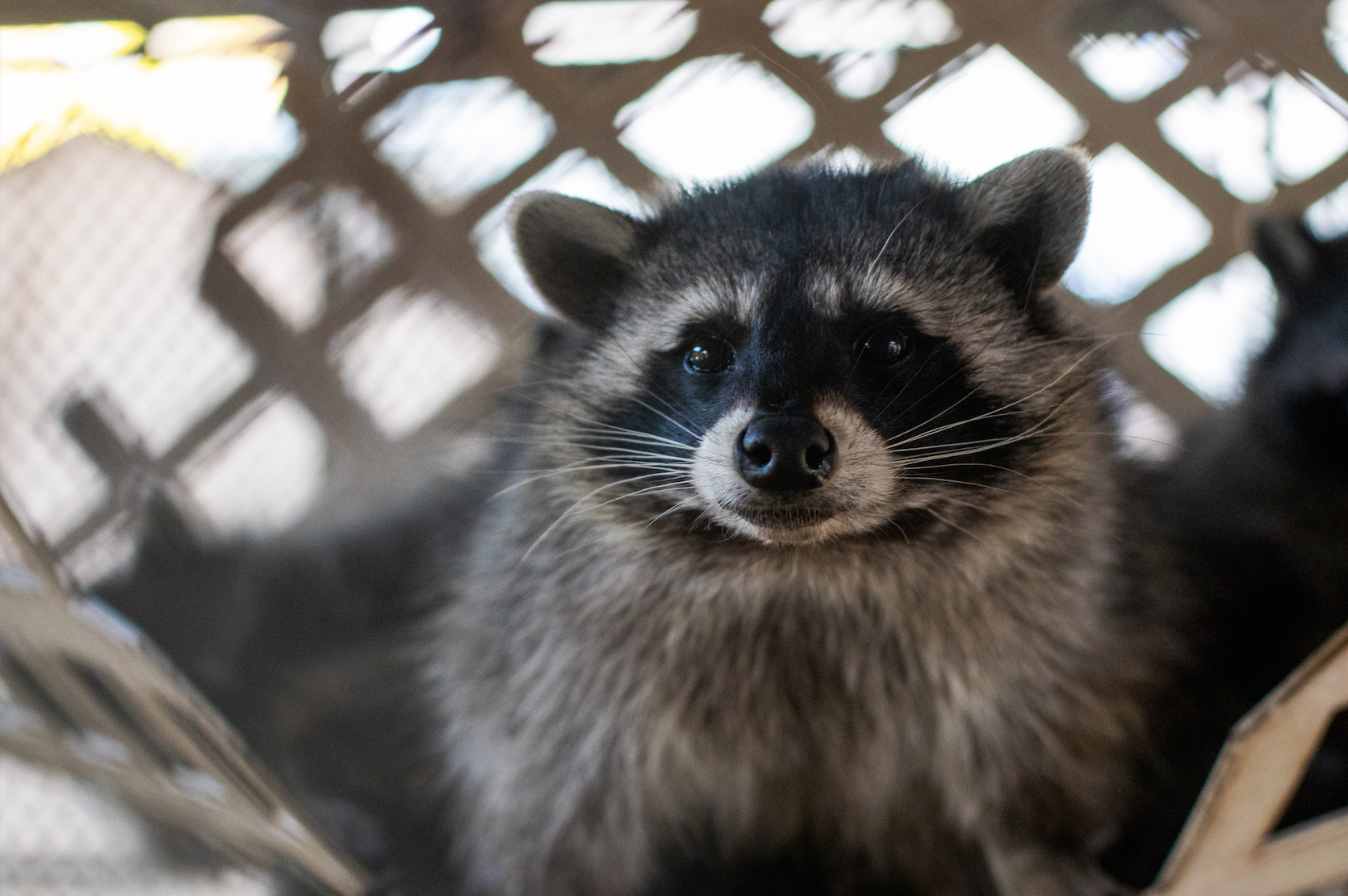
LIVING IN HARMONY WITH RACCOONS
GENERAL TIPS:
Do not touch it! Raccoons are a rabies vector species.
Do not leave pet food outside.
Keep your cats indoors.
Do not let your pets outside unsupervised after dark.
Make sure your trash cans have tight lids and are secured so they cannot be knocked over.
Put heavy gauge mesh on vents, openings to structures, and under sheds to prevent denning.
Pick up fallen fruit. Try to pick ripe fruit off of trees.
Do not leave windows or sliding doors without screens open or unattended.
Close garage doors.
Never intentionally feed a wild animal! Feeding wildlife increases human encounters, which endangers animals and harms the ecosystem.
IF A RACCOON APPROACHES YOU:
Back up.
Make noise.
Grab a long object to create distance between you and the raccoon.
If possible, spray a hose in the direction of the raccoon.
IF A RACCOON NEEDS HELP:
Since raccoons have the potential to spread rabies, do not handle the animal yourself. Call the Santa Barbara Wildlife Care Network, and a vaccinated professional will rescue the raccoon: (805) 681-1080
You can also call Santa Barbara County Animal Services: (805) 681-5285 or Santa Barbara City Animal Control: (805) 963-1513

RACCOON FAQ
-
This is not an indication that the animal is unwell, it could be a mother taking a break from her babies to find food or rest a little. Winter and spring represent mating months for animals, meaning an increase in activity during the day. If an animal appears alert and active, it is best to leave them alone.
Many seemingly nocturnal animals, like skunks, opossums, and coyotes, are crepuscular, meaning they are most active at dawn and dusk. It is completely normal to see them at these times.
If you believe an animal is sick or injured, call the Helpline: (805) 681-1080
-
- Change your trash day habits. Place your trash outside the morning of pick-up instead of the night before. Double-bag your trash. Place your bags inside of a trash bin. Secure trash bin lids with a bungee cord or place a weight on top.
- Properly store your trash bins. Place them in a protected area or secure them to your home or garage. Place them on level ground where they cannot be tipped over as easily. Place them in the line of sight of a spotlight or motion-detecting light.
- Use a humane animal repellent. Sprinkle granular animal repellent around the area where trash cans are stored. Additionally, spray a liquid animal repellent directly onto trash bags, trash cans, or recycling bins as you place them curb-side. Humane options include cayenne pepper, Critter Ridder, and Shake-away.
-
If you have a raccoon in your chimney, it’s most likely a mother raccoon looking for a safe spot to care for her litter. Do not attempt to start a fire to scare them out or use traps. Instead, follow these humane steps:
- Create loud noise. Bang on the top of the fireplace to scare them out. If this doesn’t work, use a speaker to play a loud talk radio station next to the fireplace. Most animals are scared of humans and this will make the mother think your fireplace is not a safe spot to raise her litter.
- Flash light. Try to deter them by flashing some lights.
If the raccoons leave, put a steel cap on the top of your fireplace to prevent future issues.
If this did not work, call Santa Barbara County Animal Services: (805) 681-5285 or Santa Barbara City Animal Control: (805) 963-1513
-
In summer and fall, skunks and other mammals may dig holes in lawns. To mitigate this, first identify the problem.
If there are sources of food, water or shelter, this will attract animals to your lawn. If possible, eliminate or block off these food, water, or shelter sources.
- Examples of food sources: pet food, seeds from bird feeders, fruit on fruit trees (tip: band fruit trees with sheet metal to prevent climbing animals)
- Examples of water sources: leaky pipes and hoses, pet water bowls, ground-level bird baths, koi ponds
- Examples of shelter sources: wood piles, shrubberies close to the ground, things that aren’t moved regularly (cars, boats, covered RVs, piles of junk)
If you have animals like skunks or gophers digging holes in your lawn, try using animal repellent. Humane options include cayenne pepper, Critter Ridder, and Shake-away.
If you see squirrels burying nuts in your yard, don’t be too worried; these holes are normally shallow and cannot cause too much damage.
-
Live-trapping and relocation is inhumane. If animals are introduced into areas they are unfamiliar with, they do not know where food, water, or shelter sources are. There may be other animals in the area that have diseases to which the introduced animal has never been exposed. The introduced animal may be encroaching on another's territory.
Trapping is only a temporary solution. The reasons animals are visiting your property must be addressed before they stop visiting. If you get rid of one, another will simply take its place.
Traps often do not catch the intended targets. Other animals, including pets, are just as likely to enter traps. Animals caught in traps often injure themselves trying to escape.
